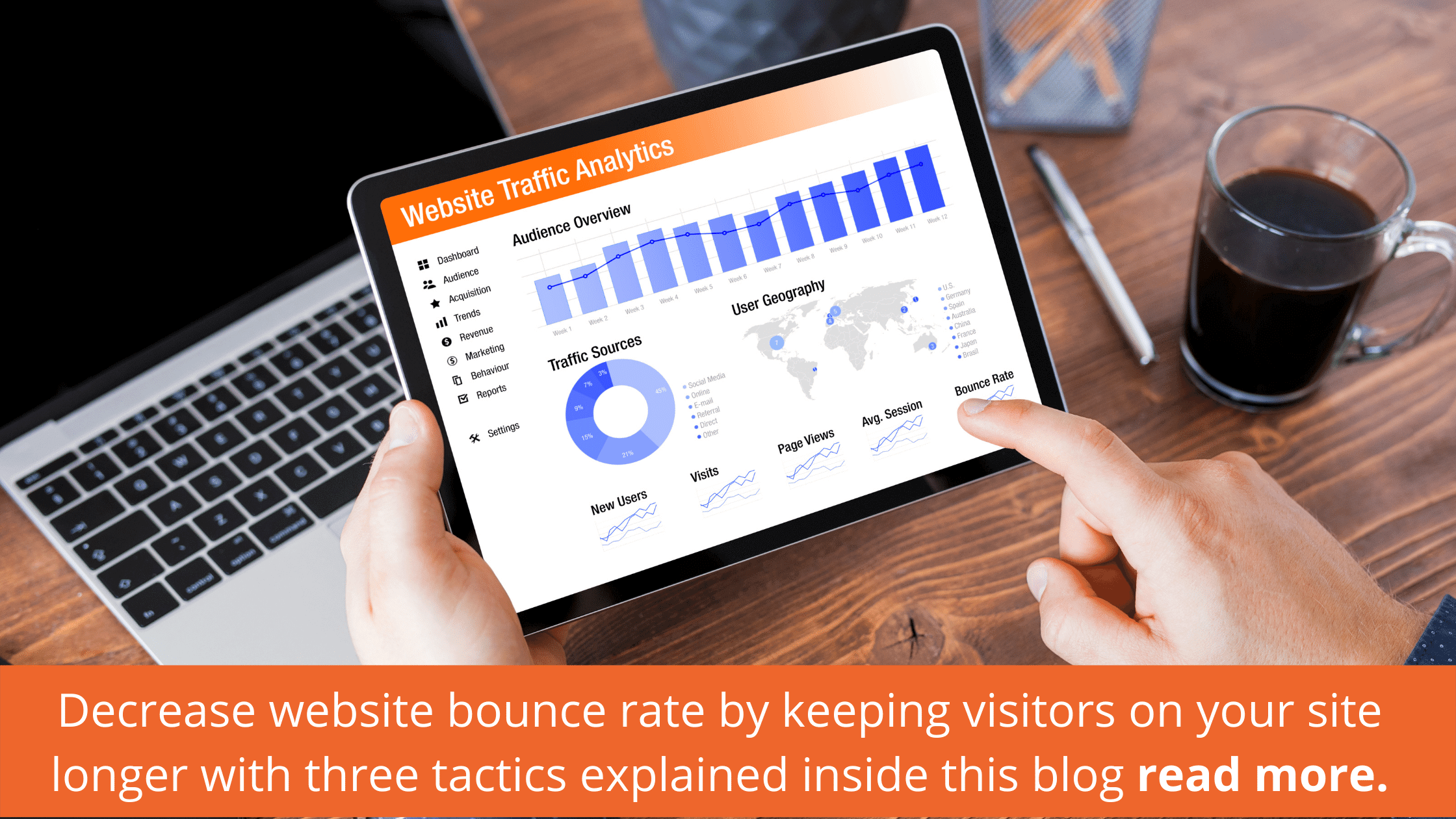Decrease website bounce rate by keeping visitors on your site longer with three tactics explained inside this blog read more. If you want to see the website bounce rate for your website connect to google analytics. Watch below video guide for reference.
If you want to keep visitors to your site, you’ll discover that it’s a balancing act. You want to present information in a dynamic, engaging way while simultaneously working to lower your bounce rate — that’s the share of visitors who only view one page before leaving.
You don’t want visitors to do a high website bounce rate or lose interest, get confused, or move on to other websites — so you need to do everything you can to make sure they spend some serious time with your blog or business website.
Have you ever been shopping for a particular product and been completely overwhelmed with the number of options, colors, prints, and sizes available to choose from? It’s enough to keep us from taking action.
And the last thing you want website users to experience is that pesky analysis paralysis — so let’s take a look at what you can do to keep them happy and engaged on your site.
The principle of constructing a helpful, easy-to-follow online experience is known as “user flow,” and it’s actually less complicated than it might sound.
Here are three tweaks that will help you optimize your user flow — and keep visitors clicking around on your site longer.
Tap into psychology
The first thing you can do to keep people on your site is tap into persuasive psychological insights. Nothing too complicated here, but it helps to understand a bit of the underlying thought processes of online browsing.
You’ll want to grab visitors’ attention and eliminate the friction that may stop them from exploring more of your website. This will help you build their trust, which might eventually turn them into paying supporters.
Construct your homepage with psychology in mind. Use the power of facial recognition by showing eyes and faces. If you run a pest control company, for instance,
you might be better off with a photo of a smiling exterminator at work rather than a giant image of a bug. It also helps to make things uncluttered and simple to read.
And use social proof to your advantage! How many happy customers have you served? What trust-building comments can they make about your business? You can watch the below video to construct a home page with elementor for free.
Taking a bit of time to read up on psychology as it relates to website conversion is well worth the effort — and if you’re looking for a place to start, Neil Patel’s blog teems with insight.
Take action to decrease website bounce rate
A business website’s bottom line goes something like this: you can’t convert a visitor into a customer without having them click at least one button or link. Right?
Keep your visitors around by driving them to the next page of your blog or website using a call-to-action button or link on every page. A beauty blogger, for example, could include a link to related posts on every article to keep users clicking.
Website readers like things that are simple to understand, and a call-to-action button or link offers a straightforward action tied to an immediate result. This can be a powerful tool when it comes to website engagement.
Take steps to ensure that the most critical elements of your website — your blog, contact form, freebie download pages, and so on — stand out.
Try writing your copy in the first person, and experiment with red buttons (which tend to draw more clicks than, say, green buttons) to lead users to these pages.
Test out what works for your audience in order to build your conversion rate, which is the percentage of visitors who actively express interest in your business — whether through signing up for a newsletter or reaching out to you with questions.
Know your widgets
A widget is a WordPress.com tool that adds static and dynamic content to areas of your theme. With their simple, attractive interfaces, widgets offer opportunities to keep visitors on your site.
WordPress. com offers detailed instructions for adding and activating widgets. Here’s the thing: people hate to wait, and giving them information in a visually pleasing way can have a positive impact on your conversion rate. Those users will end up sticking around rather than growing impatient and leaving.
Consider using widgets to promote popular blog content, social media links, YouTube videos, testimonials, and anything else that draws positive attention to what your blog or business has to offer.
You can even take advantage of the principle of reciprocity by using a widget that allows you to deliver freebies. If you run a bakery, for example, you could use a widget to create discount coupons for large orders.
At the end of the day, if you see that most of your visitors only explore a page or two of your site before leaving, don’t panic — that’s a normal experience!
Just remember there are things you can do to keep your visitors around longer. Give these tactics a whirl and see just how powerful good user flow can be.
If you want to ask or have doubts regarding how to improve website bounce rate so contact us https://beingcommerce.in/support/.

